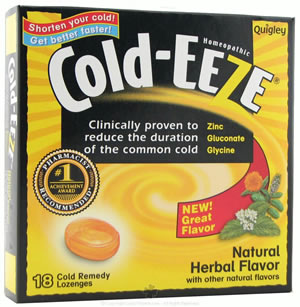
The common cold is not only highly contagious, but can last a week, two weeks, or even more. That is on average 7 or 12 days of coughing, sneezing, sore throat, and runny nose. One of the fastest-growing pharmaceutical companies, the Quigley Corporation, got its start in Bucks County by taking on this irritating problem of the common cold. Their innovative product, Cold-Eeze®, is clinically proven through several studies to cut the duration of a cold in half.
Dr. Michael Macknin, who is the head of pediatrics at the Cleveland Clinic, had conducted a free double-blind test on the zinc lozenges for the Quigley Corporation. He said he was “flabbergasted” by the results: “I got goose bumps when we broke the code […] Zinc lozenges in this study worked better than anything else out there, and not by a little, but by a lot.”
The creator and founder of the Quigley Corporation is Guy J. Quigley, originally from Donegal, Ireland. He founded the company in 1989 when he and his family moved to the United States. The business focuses on homeopathy, which is a system of treating disease based on the administration of small dosages of a drug that in larger quantities would produce symptoms in healthy individuals similar to those of the disease itself. Quigley’s first product was an all-natural energy bar that he and his associate, Charles A. Phillips, named “Quigley’s Alpha 1 Nutri-Bar.” Quigley and Phillips ran their business out of a church basement with secondhand furniture in the Philadelphia suburb of Doylestown. Although Quigley made attempts to save money for his business of which he was the sole financer, he did found little success in these efforts because of high competition in the energy bar market at the time.
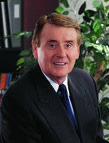
However this all changed when organic chemist John Godfrey came on the scene with a claim to have a cure for the common cold, the zinc lozenge. Godfrey first learned of zinc’s medical capabilities from a Texan man named George Eby. Eby’s daughter had been battling leukemia in 1979 and in order to help her fight off other illnesses, Eby would give her zinc pills at the first sign of a cold, and she would let it dissolve on her tongue since she was too weak to swallow. Eby was astounded when his daughter’s cold the previous night had disappeared by morning. Sensing the possible magnitude of this discovery, Eby arranged for some clinical trials of zinc gluconate to treat colds. The controversial results were published in 1984 and indicated that those who took zinc overcame their colds 64 percent faster than those who had the placebo.
Godfrey learned of Eby’s zinc study and decided to experiment with zinc in his own home laboratory. He realized early on in his trials that too much zinc could induce vomiting. Additionally, Godfrey suspected that the reason zinc was effective at fighting off colds is because zinc’s ions bonded to the virus particles to prevent them from moving and spreading to the nasal mucus membranes. However, because zinc has an awful metallic taste, sweeteners are often added to mask the potent taste of zinc. Yet Godfrey feared the sweeteners might stop the ion bonding process. His suspicions were confirmed after conducting an informal study and decided upon glycine for the substitute candy sweetener through many trial and error attempts.
In 1987 Godfrey patented zinc gluconate glycine and three years later began clinical trials at Dartmouth College. The results were that subjects who took the zinc lozenges at the onset of a cold experienced 42 percent less cold symptoms. Godfrey solicited Quigley’s help in developing the manufacturing of this product, but was first turned down by Quigley because his results had not been published and the lozenges were a nightmare, “tasting like a ball of sawdust.” Yet six months later Godfrey approached Quigley again with the idea, this time announcing his findings were about to be published. Quigley and Phillips agreed this time that Godfrey had a product worth pursuing and thus, Cold-EEZE® was born.
It was still not easy for Quigley to launch this new product idea, especially since he needed to first acquire the manufacturing and distributing rights of the zinc formula. Godfrey joined the group for a 2% consulting agreement and 3% royalty. Eby held a patent for using zinc as a cold remedy and when he eventually sued Quigley, he ended up agreeing to a 3% royalty like Godfrey. Now that Quigley owned all the rights to produce the zinc lozenges, he needed to generate interest of his product in the public.
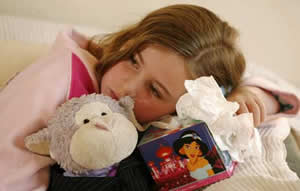
During the early 1990s, the Quigley Corporation endured some tough years trying to prepare the new zinc product and managing to sell a few nutri-bars. The process to produce the zinc lozenges took time since the mixture of zinc and other elements had to be just right as Quigley demonstrated by saying, “It’s not a matter of mixing a pot full of zinc and glycine and hope for the best.” The company gained some success by giving out free samples to generate free publicity through word-of-mouth. Quigley decided to price Cold-EEZE® at $16.75 for a bag of 30 lozenges. Realizing that Cold-EEZE® needed more scientific backing, he then approached Dr. Michael Macknin, the head of pediatrics at the Cleveland Clinic. Macknin agreed to do a double-blind study on the zinc lozenges for free and was shocked to find out how effective they are at treating the common cold. Shortly thereafter Macknin became an enthusiastic supporter of Cold-EEZE® and even bought stock shares of the Quigley Corporation in 1994. Two years later his results were published in the Annals of Internal Medicine. A Cold-EEZE® craze soon swept the nation as the miracle cold fighter dramatically rose in popularity.
However, Dr. Macknin conducted another study to determine the effects zinc gluconate has on children and found that the Cold-EEZE® lozenges yielded a negative response. This study examined 249 suburban Cleveland students in grades 1 through 12 who had come down with a cold within 24-hours of the study. Quigley challenged these findings, stating that the kids chosen for the study were not suitable because they had asthma or allergies. Macknin did conclude that it is possible the children were given too small an amount of zinc or that the cherry flavoring prevented the zinc from bonding to the virus. Nevertheless, these findings were published in the Journal of the American Medical Association, and the Quigley Corporation did an independent audit of the study, which found that most of the participants were ineligible to have been in the study in the first place. Later in November 2002, the Quigley Corporation conducted their own school-aged children study by Dr. Betty McElroy, and she found strong support that zinc helps to lessen the duration and severity of colds in children.
Cold-EEZE® may not be a cure for the common cold, but through multiple clinical studies has been proven to effectively reduce the duration of a cold and most likely prevent colds from developing as well. It should be taken between 24 to 48 hours during the initial onset of a cold and continued to be taken until all symptoms disappear. The recommended allotment of Cold-EEZE® lozenges is 6 dosages daily. The lozenge should dissolve in the mouth and not be chewed because the zinc ions will not bond to the cold virus (rhinovirus) if it is dissolved too quickly. Suzy Cohen, R.Ph., author of The 24-hour Pharmacist and Consultant Pharmacist for Cold-EEZE® states, “There are more than 200 cold viruses lurking at all times, but antibiotics won’t help fight them off once they enter your body since a cold is a virus.” 80% of colds are caused by the rhinovirus and Cold-Eeze® only treats this type of cold virus.
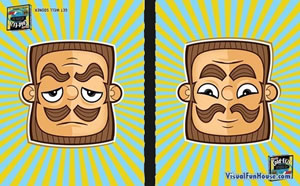
Cold-EEZE® became the third best selling cold lozenge in America and number one cold reliever recommended by pharmacists under Guy Quigley’s management by 2005: “Our total cold remedy business adds up to about $40 million dollars per year at retail. At the moment, COLD-EEZE is the number three selling lozenge in America. We have generated revenue growth over the last two years and hope to continue to build on that growth.”
The lozenges come in many different flavors, including Honey Lemon, Tropical Fruit, Lemon Lime, Strawberries & Cream, Green Tea with Honey, and their most popular flavor, Cherry. Additionally, Cold-EEZE® comes in the sugar-free flavors of Wild Cherry, Honey Lemon, and Pomegranate. There are also lozenges designed specifically for patients with diabetes, called Chocolate Mint. All of the zinc lozenges are non-drowsy and safe for patients with high blood pressure. However, this product may not be safe for children under 12, pregnant women, or women who are breast-feeding. Common side effects include nausea, upset stomach, and possibly temporary loss of taste. It is important to note that Cold-EEZE® lozenges do not cause anisoma (loss of the sense of smell), but the Cold-EEZE® nasal sprays have been discontinued due to the possibility of causing that problem.
One Cold-EEZE® consumer, Lynda H. from Utah, commented on the Cold-Eeze® Web site that she learned about their product a few years ago from a TV news program and “swears” by its reliability ever since: “I can’t remember the last time I had a really bad cold. Every time someone I know says they have a cold coming on, I tell them that I swear by the Cold-EEZE cough drops.” Not only do customers testify to the effectiveness of Cold-EEZE®, but there have been at least four conclusive clinical studies verifying the results that zinc lozenges do lessen the severity and duration of a cold. These studies include Godfrey’s “Zinc Gluconate and the Common Cold” in the 1992 Journal of International Medical Research, Macknin’s “Zinc Gluconate Lozenges for Treating the Common Cold” in the 1996 Annals of Internal Medicine, and two studies by McElroy published in the 2002 and 2003 editions of the American Journal of Therapeutics.
The Quigley Corporation realized in the mid-1990s that they needed to diversify in order to expand their business market, especially since there was a growing rise of similar zinc product competitors at the time. First they decided to offer several forms of Cold-EEZE® that included bubblegum, menthol, and sugar-free. However, Quigley Corporation wanted to break out from being known as a one hit wonder and in August 1998, the company introduced the weight-loss lozenge Bodymate, designed to prevent the body from turning food energy into fat, to cover the spring and summer months when Cold-EEZE® was not high in demand.
In 2000, the company further diversified, forming the subsidiary, Darius International, Inc., to introduce new products into the marketplace. These included Nic-O-Time Gum (smoking substitute), Ultra-Eeze (dietary supplement for bones and joints), Beta-Eeze (dietary supplement to support a healthy immune system), and Vita-Eeze (dietary supplement that combined vitamins and minerals). Quigley Corporation founded Quigley Pharma Inc. (Ethical Pharmaceuticals) in 2001 to expand beyond the market of over-the-counter products and move into prescription drugs.
Guy Quigley, chairman, president and CEO of Quigley Corporation, said in a 2005 interview with the Wall Street Transcript Corporation, “Today, we are conducting pharmaceutical research with novel new compounds derived from natural sources. We intend to develop these compounds to address diseases where few if any pharmaceutical treatments are currently available. Our goal is to develop new pharmaceutical drugs for difficult to treat ailments such as diabetic neuropathy, influenza, arthritis and radiation exposure. Just as with COLD-EEZE, we intend to develop the compounds I referred to from natural sources, wherever possible… We believe a more natural approach may be beneficial to product users and may provide greater safety than many of the current pharmaceutical drugs on the market.”
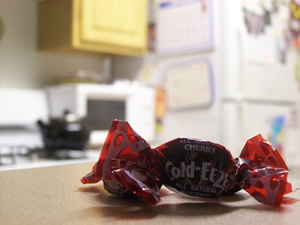
All of Quigley Corporation’s diversification efforts paid off since revenues that totaled half a million dollars in 1995 skyrocketed to $5 million a year later and during the 1997 Cold-EEZE® frenzy to $70.2 million. However, in 1998 sales dropped to $34.3 million, a decrease that Quigley management contributed to a mild winter and new competition of herbal cold treatments that cut into their target market. Quigley Corporation’s expansion ventures and their number one product Cold-EEZE® thrived in the late 1990s but with the turn of the 21st century, started to slip into a spiral of troubles.
Recently, the Quigley Corporation has experienced a massive turnover of the board of directors since dissident stockholder Ted Karkus lodged a successful proxy contest in May 2009. (A proxy contest is a strategy employed to change superiors in a company by convincing shareholders to use their proxy votes to install new management.) Karkus had an illegal financial relationship with Dr. Richard A. Rosenbloom, COO of Quigley Pharma Inc., as he had loaned Rosenbloom $55,000 and bribed him with an increased salary and share of stocks if Rosenbloom supported Karkus during the proxy battle. Both Guy Quigley and Charles Phillips resigned from their posts in June. Ted Karkus was officially named the new CEO of Quigley Corporation in July.
After taking over the Quigley Corporation, Ted Karkus said, “We will have the immediate and daunting task of halting the precipitous decline in financial performance that the Company has experienced over the past few years. Our long term goals include restoring investor confidence in the Company, its management and its prospects. Ten years ago, for the week that ended June 20, 1999, the Company’s common stock traded in a range of $4.73 to $4.99 per share. In November, 2005, the Company’s stock reached nearly $17.00 per share. Last Friday, the Company’s stock closed at $4.26 per share. While we cannot make any assurances of future performance, the Company now has an experienced and entirely independent Board of Directors that is committed to doing their best for the Company and all of its shareholders.”
Although the Quigley Corporation has only been around for about 3 decades, the company has managed to make many breakthroughs in the medical field, especially with their popular cold remedy, Cold-EEZE®. Guy Quigley self-financed the operation and turned it into a multi-million dollar company within a few short years after going public in the early 1990s. However, despite the Quigley Corporation’s efforts to branch out and increase their markets and sales, management was overturned to a new leader. The future of this natural homeopathic company rests in Ted Karkus’s hands as the next few years will determine if Quigley Corporation finds renewed success or continues to disappear into obscurity.
Sources:
- Armstrong, Mike. “phillyinc - Sore feelings and lozenges.” Philadelphia Inquirer, The (PA) 15 Jun. 2009, CITY-C, BUSINESS: C01.
- Clark, Jane B. “Fighting Off the Cold--and the Hype.” Kiplinger’s Personal Finance Nov. 1999: 62.
- Cold-EEZE :: Cold-EEZE in Clinical Studies. <http://www.coldeeze.com/>.
- Dinger, Ed. International Directory of Company Histories. Vol. 62. Ed. Tina Grant and Miranda H. Ferrara. Detroit: St. James Press, 2004. 294-297.
- Dworkin, Norine. “Cold Comfort.” Vegetarian Times Dec. 1998: 44.
- Farrell, Jodi M. “MED WATCH.” Miami Herald, 26 Feb. 2008, Final, Tropical Life: 4E.
- Gidman, Jennifer. “Cold-EEZE contagious.” Brandchannel.com. 20 Apr. 2009. 10 Dec. 2009 <http://www.brandchannel.com/features_webwatch.asp?ww_id=428>.
- Godfrey, J.C., B. Conant Sloane, D. S. Smith, J. H. Turco, N. Mercer, and N. J. Godfrey. “Zinc Gluconate and the Common Cold: A Controlled Clinical Study.” The Journal of International Medical Research 20.3 (1992): 234-246.
- Hutchcraft, Chuck. “MAKING COLDS SNIVEL - ZINC LOZENGE IS BACK AS HOTTEST REMEDY--IF YOU CAN FIND IT.” Chicago Tribune 18 Oct. 1996, NORTH SPORTS FINAL, BUSINESS: 1.
- McElroy, Betty Howell, and Shelley Porter Miller. “Effectiveness of Zinc Gluconate Glycine Lozenges (Cold-EEZE) Against the Common Cold in School-Aged Subject: A Retrospective Chart Review.” American Journal of Therapeutics 9.6 (2002): 472-475.
- McElroy, Betty Howell, and Shelley Porter Miller. “An Open-Label, Single Center, Phase IV Clinical Study of the Effectiveness of Zinc Gluconate Glycine Lozenges (Cold-EEZE) in Reducing the Duration and Symptoms of the Common Cold in School-Aged Subjects.” American Journal of Therapeutics 10.5 (2003): 324-329.
- Mossad, Sherif B., Michael L. Macknin, Sharon V. Medendorp and Pamela Mason. “Zinc Gluconate Lozenges for Treating the Common Cold: A Randomized, Double-Blind, Placebo-Controlled Study.” Annals of Internal Medicine 125 (1996, 15 July): 81-88.
- “PHARYNGITIS; Say Goodbye to Sniffles Sore Throats.” Biotech Business Week 17 Dec. 2007: 1754.
- Quigley-The Nature of Human Health. <http://www.quigleyco.com/>.
- “The Quigley Corporation -- Company History.” FundingUniverse.com. 10 Dec. 2009 <http://www.fundinguniverse.com/company-histories/The-Quigley-Corporation....
- The Quigley Corporation. Dissident Stockholder Ted Karkus Found to Have Undisclosed Financial Arrangements With Dr. Richard A. Rosenbloom, COO Of Quigley Pharma, From 2008 to Date of Proxy. The Quigley Corporation-News Release. 19 May 2009. <http://www.quigleyco.com/index.php?mact=News,cntnt01,detail,0&cntnt01art....
- The Quigley Corporation. Guy J. Quigley Resigns as Chairman and CEO. The Quigley Corporation-News Release. 12 June 2009. <http://www.quigleyco.com/index.php?mact=News,cntnt01,detail,0&cntnt01art....
- The Quigley Corporation. Ted Karkus and Karkus Slate of Directors Prevail in Federal Court, Seated as Directors of The Quigley Corporation. The Quigley Corporation-News Release. 15 June 2009. <http://www.quigleyco.com/index.php?mact=News,cntnt01,detail,0&cntnt01art....
- The Quigley Corporation. TED KARKUS NAMED CEO OF THE QUIGLEY CORPORATION. The Quigley Corporation-News Release. 17 July 2009. <http://www.quigleyco.com/index.php?mact=News,cntnt01,detail,0&cntnt01art....
- THE WALL STREET TRANSCRIPT CORPORATION. “CEO INTERVIEW: GUY QUIGLEY - THE QUIGLEY CORPORATION (QGLY).” Wall Street Transcript 30 May 2005.
- “Zinc: Out in the Cold.” New York Times 30 Jun 1998: F7.
